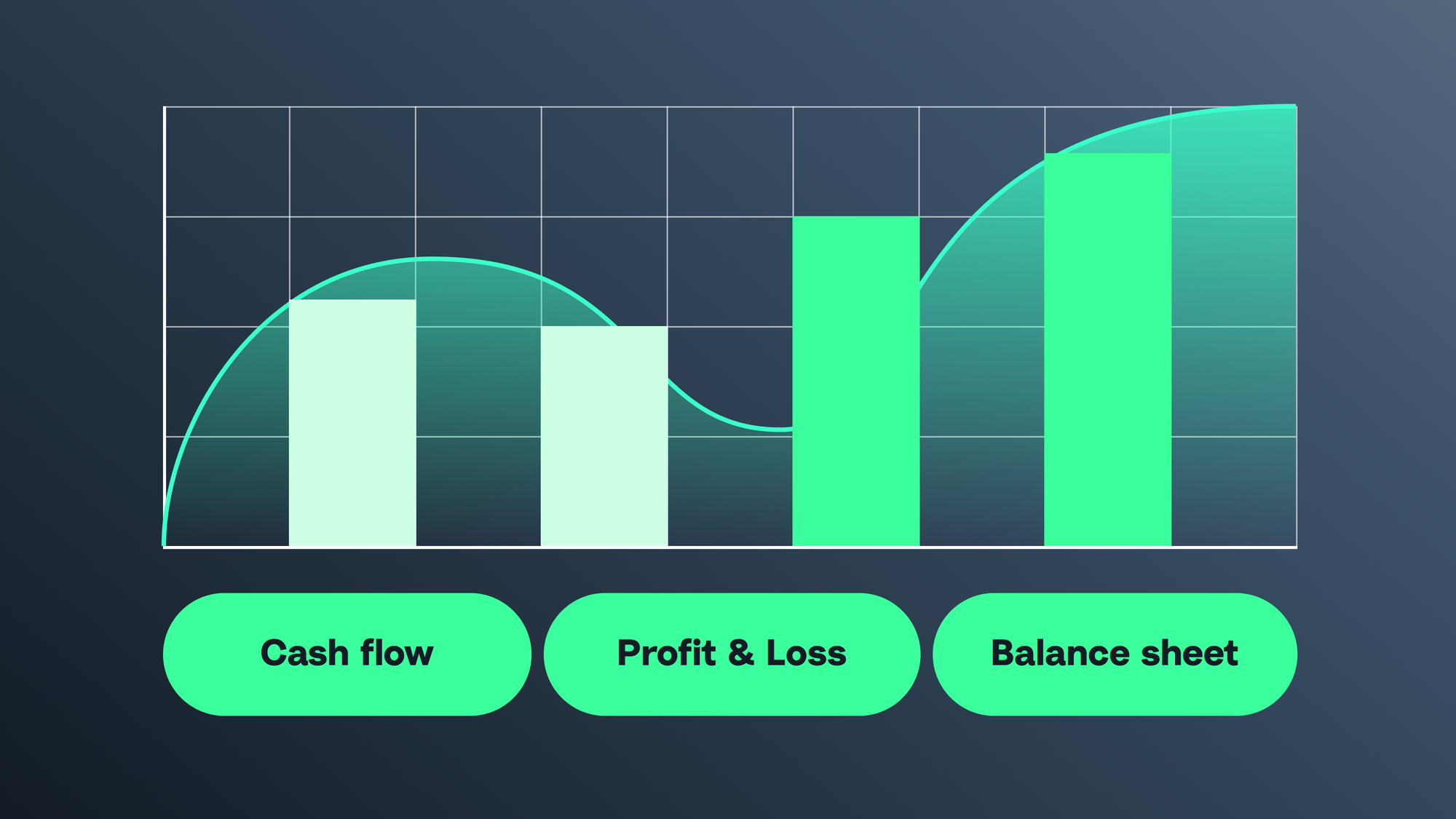The Comprehensive Ecommerce Finance Guide
This Muqasama article is a guest addition written by Imad El Fay, VP of Growth at Kitopi and McKinsey and Harvard Business School alumni.

What separates ecommerce failures and success?
In my experience, a key factor distinguishing successful ecommerce entrepreneurs is their profound understanding of finance and ability to maintain a positive cash flow.
I have witnessed the complexity of managing finances for an ecommerce business and made many mistakes. Through this newsletter, I hope to help some of you avoid some of these mistakes.
This post aims to guide you through building and managing the financial structure of your ecommerce business and is divided into five sections:
- How to use the model
- Understanding the structure
- Calculating your profit
- Why cash is king
- Balancing it all together
I’m also sharing the template that we use when assessing ecommerce opportunities. When you read this article, it will be helpful for you to follow the template simultaneously.
Using the model
Being on top of your financial model and budget will help you make better business decisions and estimate how much money you need to raise.
- Quality in, quality out
The quality of your model’s output is as good as the quality of its inputs. Assumptions should be stress-tested, validated, and continuously revisited to improve the accuracy of your projections. - Simple is better
If you had to choose between simplicity and precision, you should go for simplicity nine times out of ten. A more straightforward structure makes it easier to understand the model and communicate with your team and investors more straightforwardly. - Your projections will be wrong
The exercise will help you build a holistic picture of your business and understand it better, but any projections made are not guaranteed to be accurate. - A financial model is a dynamic tool
You should continuously update the model with actual figures as each month passes and analyse it to understand the difference between your forecast and reality. - Scenarios
Financial projects and plans are not meant to be set in stone but act as guidelines for your day-to-day decisions. Scenario analyses and sensitivity tests can generate exciting insights and help you better understand your business's growth and profitability drivers.
Understanding the structure
As we explain the model, open up the template and follow as each page is described.
Ecommerce Financial Model TemplateThe model comprises ten different interlinked sheets split into three sections.
Three input sheets, where you enter your numbers based on either future projections or past actuals.
Four component sheets calculated from your inputs show you essential information about specific parts of your business.
Three statement sheets are calculated from the other seven, giving you a holistic view of your company’s financial health.
Inputs
- Input sheet
This is where you put all your basic business assumptions, ranging from product mix and launch timelines to sale channel expectations and cost estimates. - Customer acquisition
This is where you keep track of the number of new and returning customers by analysing your shop’s traffic, conversion rates and customer return rates. - Fixed costs (SQ&A)
This projects your cost structure’s fixed elements, such as salaries, infrastructure, admin fees, etc.
Outputs
- Unit Orders
This component shows the orders that must be fulfilled through which channel. - Inventory Management
This sheet uses the unit orders component to calculate the number of products to hold in your warehouse based on your order outflow and lead times. - Revenues
This sheet shows the total money coming in based on your customer acquisition and cost projections. - Variable costs (COGS)
This sheet calculates the costs depending on the number of sales.
Statements
- Profit & Loss (P&L)
A financial statement summarising your revenue, costs and expenses during a specific period. - Cashflow
This is your record of cash flowing in and out of your business. - Balance sheet
A sheet tracking all assets, liabilities and capital of your business.

Calculating your profit
The P&L of an ecommerce business mirrors the operational activities that a company needs to conduct to fulfil a sale order.
To determine if your business makes a profit or a loss you calculate your total revenue minus your total costs.

Revenue
An early-stage consumer startup typically generates revenues from two sources:
- Its ecommerce shop, where revenues can be estimated by multiplying the number of orders by the average order value and adjusting for discounts and returns. The number of orders can be derived by multiplying the number of visitors to your website by the average conversion rate.
- Third-party retailers, which typically charge a 40–60% retail fee.
Costs
Ecommerce costs can be separated into three parts.
Variable costs
Costs directly related to your sales volume.
| Cost of Goods Sold (COGS) | Cost of manufacturing and packaging the product. A healthy COGS rate should be kept below 15–20% of the sale price. |
| Inbound logistics costs | Cost of moving finished products from your supplier to your distribution centres. It includes freight forwarding and customs and duties. |
| Outbound logistics costs | Fees associated with product warehousing, picking-&-packing, delivery, and return processing. These activities are typically outsourced to a 3PL service provider, and their cost should ideally remain below 20–25% of the total order value. |
| Processing costs | Order and payment processing fees (typically 2–3% of order value plus a small fixed fee). Tabby’s commission rate would be in this bucket. |
| Direct customer acquisition costs (CAC) |
Digital ad spend on social media channels, search platforms, and affiliate marketing campaigns that directly lead to sales. |
Fixed costs
Costs that are not dependent on sales and thus don’t change as volumes increase.
| Payroll | HR expenses, and admin and legal fees |
| Infrastructure and setup fees | Office rent, utilities, web hosting services, and monthly app fees (Shopify & al) |
| Customer support | Call center, although in some cases, these are outsourced to external players that charge a fixed monthly fee and a variable fee on each interaction. |
| Product development fees | Sampling, customer interviews, and user testing |
| Fixed marketing spend | Costs related to brand building, owned marketing channel management, and promotional spend. |
ITDA
Before calculating your net profits, you need to subtract the financial costs of any interest, taxes, depreciation and amortisation.
Bottom-line
The company’s EBITDA (Earnings before Interest, Taxes, Depreciation, and Amortization) is calculated by subtracting variable and fixed costs from your revenues. Net profits are derived by removing the ITDA from EBITDA.
A sustainable ecommerce business should target a P&L structure where variable costs are limited to 50–60% of revenues and fixed costs do not exceed 20–25%. This allows the business to maintain a 15–25% EBITDA margin and leaves room for unexpected costs and leakages in the system.
A profitable business is not necessarily healthy, bringing us to the cash flow statement.
Cash is king
‘Cash is King’ is a widely used expression in the startup world, as most startups fail when they run out of cash, which happens even when the unit economics are healthy.
As a result, you should pay special attention to your cash flows, which are linked to three categories: operating activities, investing activities, and financing activities.
Cash from operating activities
Cash from operating activities refers to the money generated through the company’s regular day-to-day activities and is divided into multiple three major components:
- Net profits over the same period (which can be derived from the income statement above).
- Adjustment to net profits by adding back the non-cash expenses from the income statement, such as depreciation and amortisation.
- Change in working capital estimates the additional cash a company needs to run its day-to-day operation.
A company’s working capital is calculated by adding the accounts receivable (the amount of money your customers owe you) to the value of inventory on-hand and subtracting the accounts payable (amount of money you owe your suppliers) for a given period.
Negative working capital is the holy grail of business. It implies that your suppliers are financing your growth, given that it takes you longer to pay them than it takes you to sell your inventory and collect your money. Alternatively, positive working capital means that you require operating cash to finance your business and thus need to continue injecting money as your company grows, even when your profits are positive.
Cash from investing activities
Cash from investing activities refers to the cash spent building the company’s assets. These include:
- Capital investments (CAPEX) in equipment (for manufacturing, supply chain, or brand asset development) and properties
- Investments in intangible assets such as brand assets and patents
Cash from investing activities is generally negative (given it’s spent cash) unless a company sells a division or part of its assets to an external buyer.
Cash from financing activities
The third and final component is cash from financing activities, which includes:
- Cash from equity contributions (positive when equity is injected into the company through an external investment and negative when dividends are paid to the company’s owners/ investors)
- Cash from debt contributions (positive when the company takes a loan and negative when the loan is being paid back)
To calculate your net change in cash, add up your total cash at the end of the month (from the three cash components) and take away from your total cash at the start of the month.

Balancing your books
The balance sheet provides an overview of what the company owns (assets), what it owes (liabilities), and its shareholders' equity book value.
Whereas the P&L and cash flow statements track financials over a period of time, the balance sheet is a snapshot representing the state of a company’s finances at a specific date.
Assets
A company’s assets can be broken down into current assets and non-current assets. Current assets include:
- Cash on hand (or in your bank account)
- Accounts receivable, which we discussed above. Accounts receivable are typically low in ecommerce, as consumers pay once they place an order. However, as you move towards physical retail, days receivables rapidly pick up, given retailers tend to pay you 30 to 45 days after purchase.
- The inventory in your warehouse depends on your supplier’s minimum order quantities, the average lead manufacturing times, the number of SKUs sold, and other factors. The Inventory sheet provides a good overview of how inventory is calculated based on these inputs.
Non-current assets include tangible assets, such as property, plants, equipment (net of depreciation), and non-tangible assets such as brand and patents.
Liabilities
Similarly, a company’s liabilities can be broken into current and non-current elements, where current liabilities include:
- Accounts payables, which consist of the money you owe your suppliers. Controlling your accounts payable is the most effective tool for reducing your cash conversion cycle and generally consists of negotiating better payment terms with your suppliers.
- Short-term debt or working capital financing
Non-current liabilities mostly include long-term debt raised to finance operations.
Shareholders’ equity
The shareholder's equity consists of retained earnings and common equity:
- Retained earnings are calculated by adding the business's net profits over its life and removing paid dividends.
- Common equity is the sum of equity injected into the business
Make a copy of the template and use the information in this article to help fill in your numbers. Experiment with where to increase or reduce your figures to make your cash flow, P&L, or balance sheet healthier.

